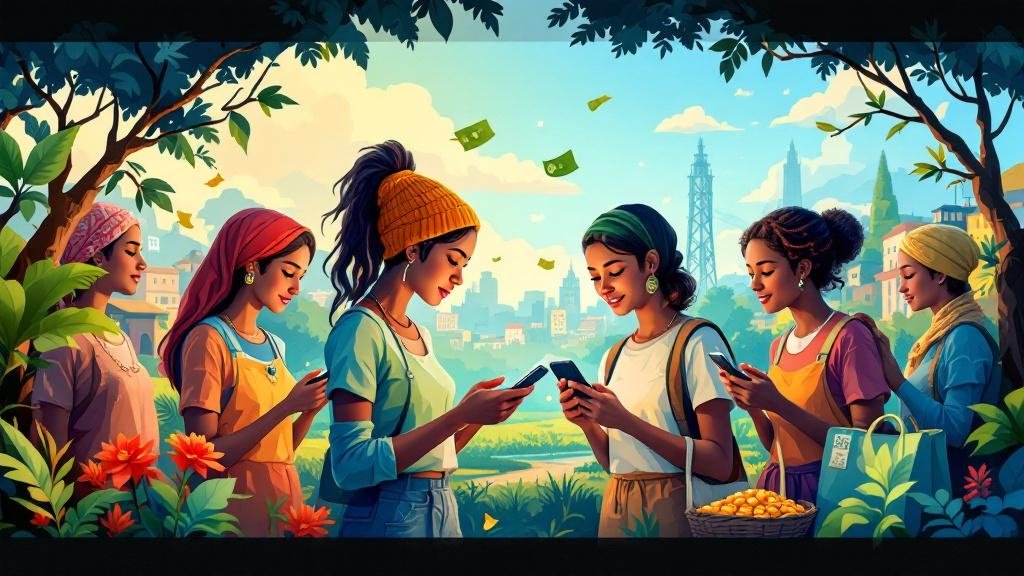Imagine trying to save money, receive payments, or make purchases—without access to a bank account. For nearly 1.4 billion people globally, this is a daily reality. They are the unbanked—individuals with no formal ties to the traditional banking system. But thanks to digital wallet for unbanked solutions, this is starting to change.
With the rise of mobile technology and fintech innovation, digital payments for underserved communities are becoming more accessible, secure, and affordable than ever. In this article, we’ll explore how digital wallets are bridging the gap and unlocking financial empowerment through technology.
What Does “Unbanked” Mean, and Why Does It Matter?
The term “unbanked” refers to people who do not have access to a traditional bank account. They often rely on cash-based transactions, informal savings methods, or money lenders. This financial exclusion limits their ability to:
Secure credit or loans
Build savings with interest
Receive wages digitally
Participate in the digital economy
The unbanked population is not limited to rural villages or developing nations. Even in developed countries, millions remain excluded due to lack of documentation, distrust in banking, or high fees.
How Digital Wallets Solve the Problem
✅ What is a Digital Wallet?
A digital wallet is a mobile or online platform that stores payment information securely and allows users to:
Send and receive money
Pay bills
Buy goods and services
Access microloans or savings tools
For the unbanked, this creates a low-barrier entry to digital finance—especially when paired with a mobile phone.
📱 Mobile Wallet for Unbanked Users: A Game-Changer
In areas with high smartphone penetration, even in remote locations, mobile wallets serve as the first step into financial inclusion. Apps like:
M-Pesa (Kenya)
GCash (Philippines)
Paytm Payments Bank (India)
…are designed with low-income users in mind, enabling peer-to-peer digital payments, bill splitting, remittances, and even microtransactions via mobile wallets.
Why Digital Wallet for Unbanked Is the Right Solution
Here’s how digital wallets are reshaping the financial landscape for the underserved:
1. 🌍 Financial Inclusion via Digital Wallets
Digital wallets are often more accessible than bank accounts, requiring only a phone number and basic ID. This inclusive digital payment platform offers financial access without bureaucracy.
2. 💳 No Bank Account? No Problem
Many wallets are designed as no bank account digital wallets, where users can store cash balances, transfer money, and pay digitally—without needing a linked bank account.
3. 🚀 Low-Cost & Scalable
With minimal infrastructure, fintech solutions for unbanked users are scalable in both rural and urban settings, making them ideal for underserved markets in fintech.
4. 🔐 Safe and Secure
Modern secure mobile payment apps use biometric login, two-factor authentication, and digital identity for financial access to ensure data privacy and security.
Real-Life Examples: Digital Wallets in Action
📌 Kenya: M-Pesa’s Mobile Banking Revolution
M-Pesa started as a mobile payment platform but quickly became a lifeline for the unbanked in Kenya. By 2025, over 80% of the adult population has used M-Pesa to save money, pay bills, and access credit.
📌 India: Paytm’s Rural Penetration
Paytm, through branchless banking models, reaches millions of users in rural India. With QR-based payments and offline access features, even those without smartphones can participate.
📌 Philippines: GCash for Microbusinesses
GCash empowers low-income entrepreneurs to accept digital payments, boosting financial empowerment through technology for street vendors and farmers.
Challenges Still Ahead
Despite progress, several challenges remain:
Digital literacy gaps
Limited smartphone penetration in unbanked areas
Lack of trust in technology
Network outages and poor infrastructure
These issues require ongoing investment in education, policy support, and infrastructure development to ensure digital wallets reach every corner of the economy.
How Fintech is Driving Inclusive Growth
Modern fintech platforms are intentionally designed to serve low-income, unbanked populations. Here’s how they’re doing it:
✅ User-Friendly Interfaces
Apps are designed with simple language, icons, and voice instructions to aid low-literacy users.
✅ Offline and Low-Bandwidth Modes
Some apps work with USSD codes or SMS, ideal for cashless solutions in rural communities where internet access is limited.
✅ Agent Networks for Onboarding
Fintechs partner with local agents who help users register, deposit, and withdraw money—bridging the trust gap and offering low-income user onboarding in a relatable manner.
The Future of Financial Access for the Unbanked
With digital wallets becoming smarter, more inclusive, and easier to use, the vision of universal financial inclusion is within reach.
Here’s what we can expect:
Integration with digital IDs for faster KYC
More government partnerships for welfare distribution
Enhanced interoperability between wallets and banks
Increased focus on women and vulnerable groups
As branchless banking and mobile-first fintech grow, so will opportunities for financial empowerment and economic resilience.
✅ FAQs: Digital Wallets for the Unbanked
1. What is the best mobile wallet for unbanked users?
Apps like M-Pesa, GCash, and Paytm are popular in different regions. They are built with financial inclusion in mind and cater to users without traditional bank accounts.
2. Can someone use a digital wallet without a smartphone?
Yes! Many providers support USSD or SMS-based wallets, ideal for users with feature phones or poor internet access.
3. How can digital wallets support financial inclusion?
By offering access to digital financial services like payments, savings, loans, and insurance, wallets help the unbanked participate in the formal economy.
4. Are digital wallets safe for low-income users?
Modern wallets use secure encryption, biometric logins, and two-factor authentication to protect user data and funds—even for non-tech-savvy individuals.
5. How does fintech help underserved communities?
Fintech provides low-cost, user-friendly, and accessible alternatives to banks. It helps people manage money, grow businesses, and plan for emergencies.
6. Can digital wallets be used in rural areas with no banks nearby?
Absolutely. Many wallets support offline features and use agent networks, making them perfect for rural, cash-dependent regions.
7. What are the main barriers to adopting digital wallets in unbanked areas?
The biggest challenges are lack of smartphones, poor internet, digital illiteracy, and distrust of financial institutions.
🎯 Conclusion: Digital Wallets Are Unlocking the Future of Finance
A digital wallet for unbanked users is more than just a tool—it’s a lifeline. From Kenya to India, and from urban slums to remote villages, mobile wallets are driving financial inclusion, dignity, and opportunity.
As fintech for unbanked and underbanked evolves, we must continue building inclusive, user-friendly platforms that empower everyone—regardless of where they live or how much they earn.
In the digital age, no one should be left behind.








Comments (0)